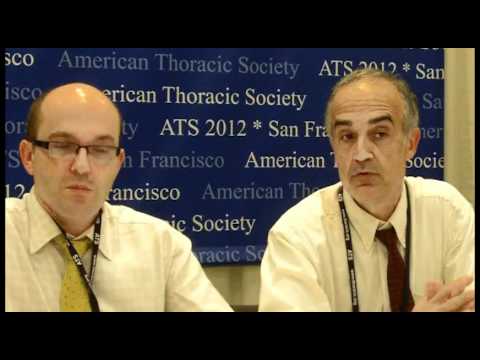The recent findings of significantly increased risk for cancer incidence and mortality in people with sleep apnea echo previous in vitro and animal studies that found repeated episodes of hypoxia were associated with accelerated cancer progression.
In one of two new studies, people with obstructive sleep apnea were 10%-480% more likely to die of cancer, depending on apnea severity, compared with people without OSA, in a 20-year follow-up study of 1,522 participants in the Wisconsin Sleep Cohort.
Both the number of dips in oxygen level during sleep and the severity of hypoxia during those episodes were associated with increased risk of cancer mortality, but the association was stronger with hypoxia severity. Patients who spent much of their sleep time getting less than 90% oxyhemoglobin saturation were nearly nine times more likely to die of cancer during the study, compared with controls, said Dr. F. Javier Nieto and his associates reported in a press briefing at the annual meeting of the American Thoracic Society.
In a separate prospective 5-year study of 5,618 patients who were referred to seven sleep clinics in Spain, severe hypoxemia during sleep was associated with significantly increased incidence of cancer. Patients with OSA who spent more than 30% of their sleep time getting less than 90% oxyhemoglobin saturation had more than twice the risk for a new diagnosis of cancer during 5 years of follow-up, compared with patients without sleep apnea, Dr. Miguel A. Martinez-Garcia and his associates reported at the briefing.
“In both studies, when they looked at the amount of low oxygen that they were getting, that’s when the incidence and mortality from cancer went up,” said Mary J. Morrell, Ph.D., who moderated the press briefing. “What it suggests is that there’s something associated with low oxygen that’s triggering the cancer, which would fit with the initial animal work that caused them to look into the two large cohorts” of people, added Dr. Morrell, professor of sleep and respiratory physiology at Imperial College, London.
The U.S. study analyzed mortality data for participants in the Wisconsin Sleep Cohort, a prospective, community-based study of the predictors and natural history of sleep disorders. All underwent polysomnography at the start of the study. Sleep-disordered breathing was defined as an apnea-hypopnea index (AHI) score of 5 or greater, representing the mean number of apnea and hypopnea events per hour of sleep.
The mortality risks were associated with the presence and severity of sleep apnea in a dose-response fashion, said Dr. Nieto, chair of the department of population health sciences at the University of Wisconsin, Madison.
Compared with participants who did not have sleep apnea, those with mild sleep apnea (defined as an AHI of 5-14.9) were 10% more likely to die of cancer during the follow-up years. People with moderate sleep apnea (an AHI of 15-29.9) were twice as likely and those with severe apnea (an AHI of 30 or greater) were nearly five times as likely to die of cancer, compared with the control group without sleep apnea. The results were adjusted for the confounding effects of age, sex, body mass index, and smoking, Dr. Nieto said.
“The key thing is that it’s the amount of low oxygen that the patients are getting, not essentially how many times it occurs, which is the apnea-hypopnea index. It’s the amount that they’re getting” that matters most, Dr. Morrell noted.
When the results of the Spanish study were analyzed according to scores on the AHI, which includes both hypopnea and hypoxemia, the increased incidence of cancer in patients with sleep apnea became statistically nonsignificant after adjusting for the confounding effects of age, gender, and body mass index, said Dr. Martinez-Garcia of Le Fe University and Polytechnic Hospital, Valencia, Spain. Subset analyses suggest that the association between the hypoxemia index and cancer incidence may be limited to males and younger patients, Dr. Martinez-Garcia said.
Dr. Nieto, Dr. Martinez-Garcia, and Dr. Morrell reported having no financial disclosures.


0 Comments